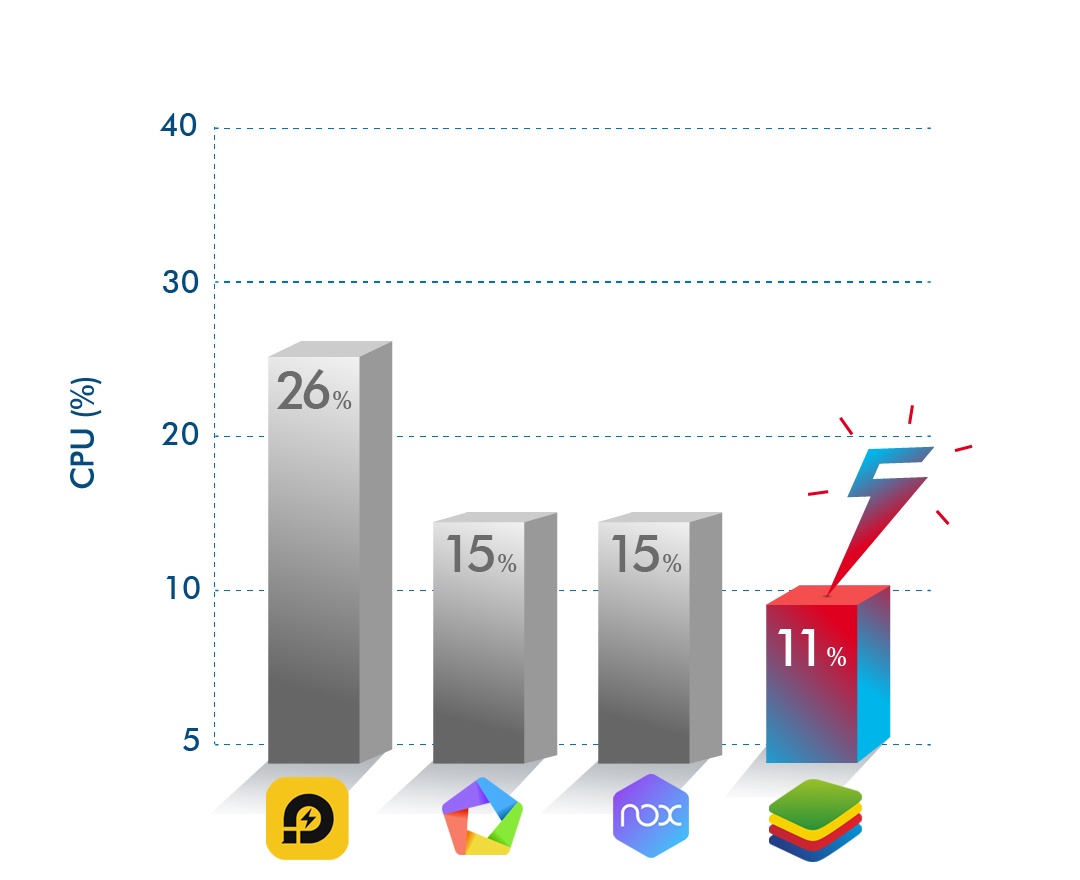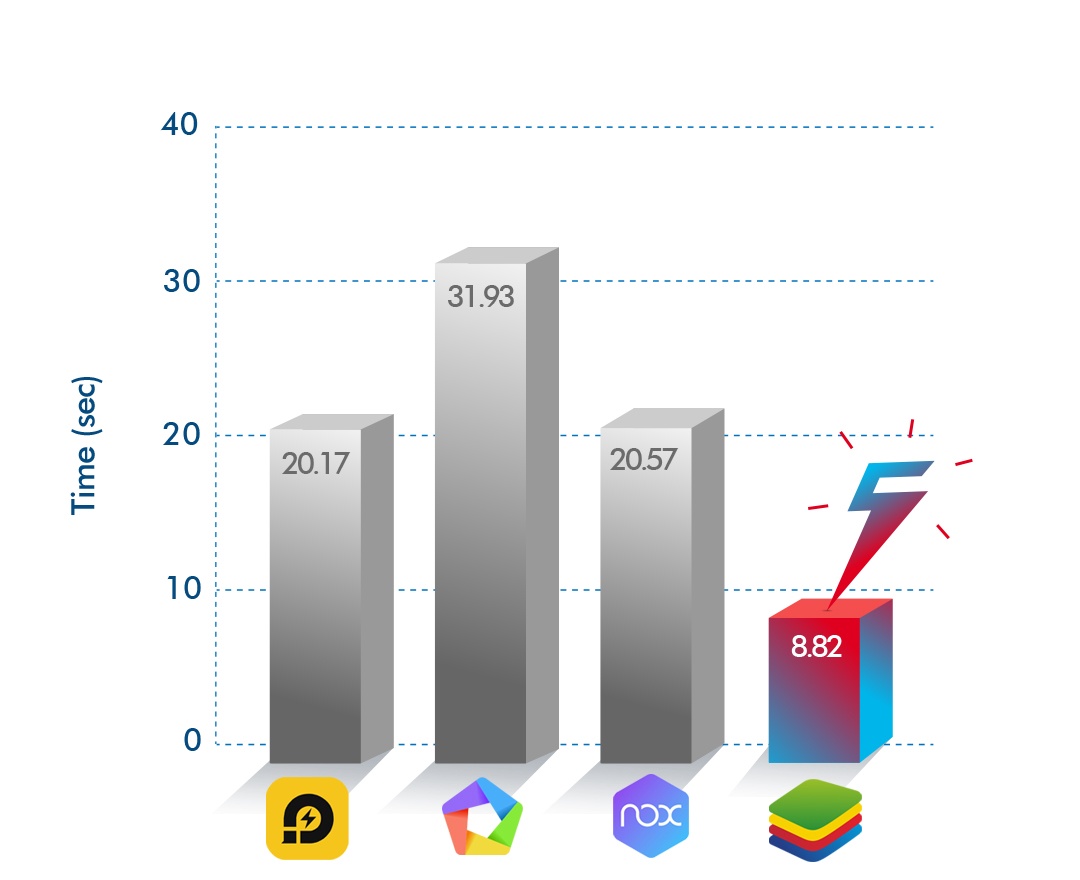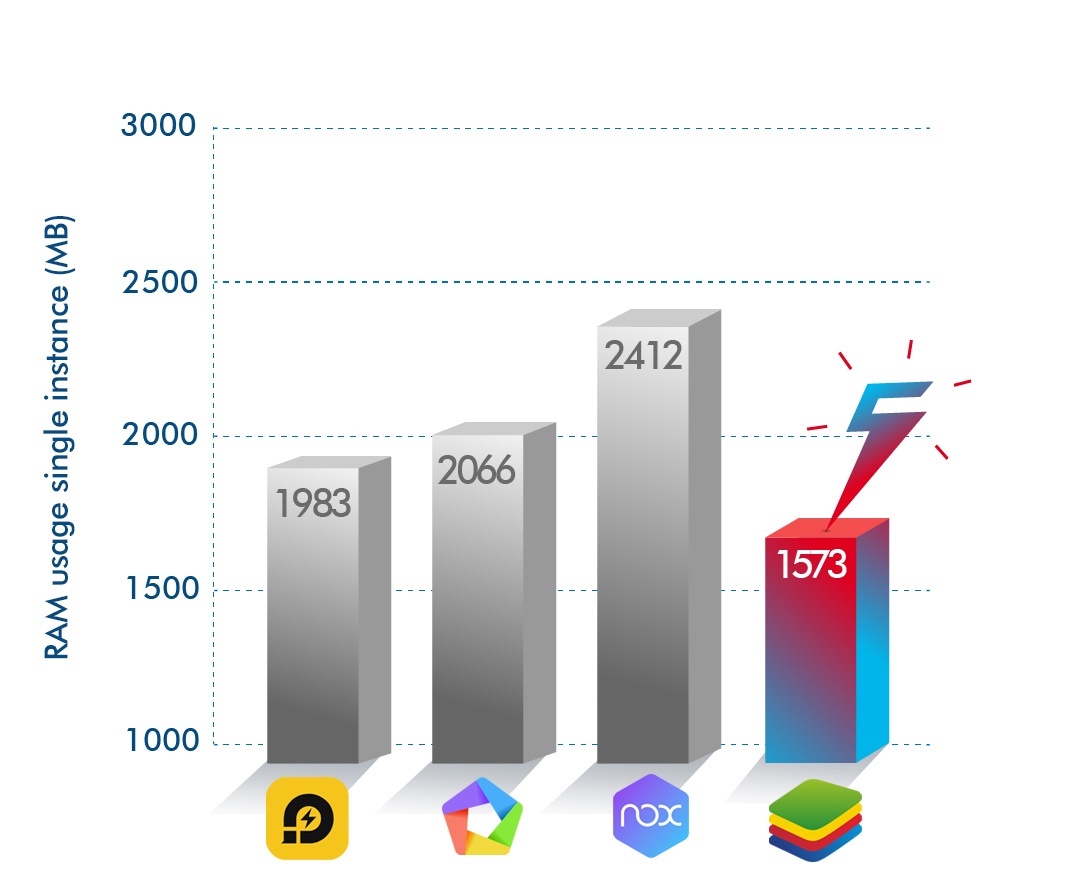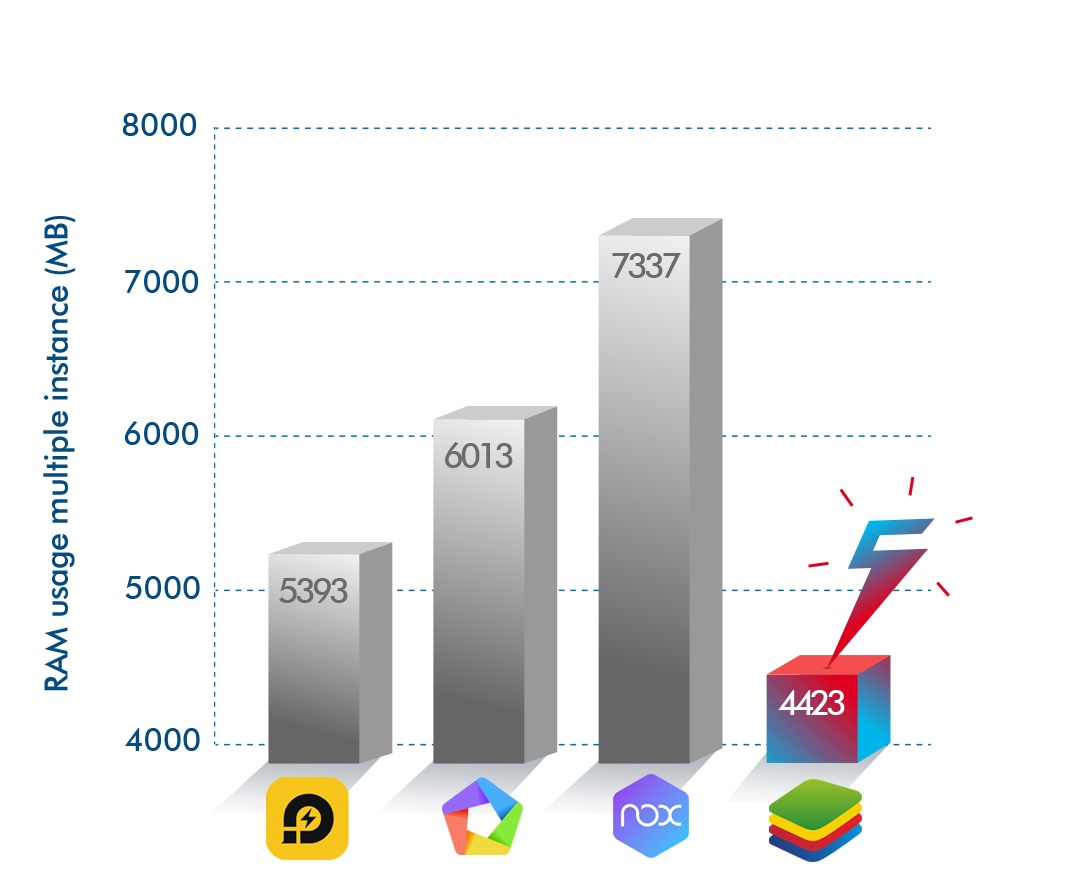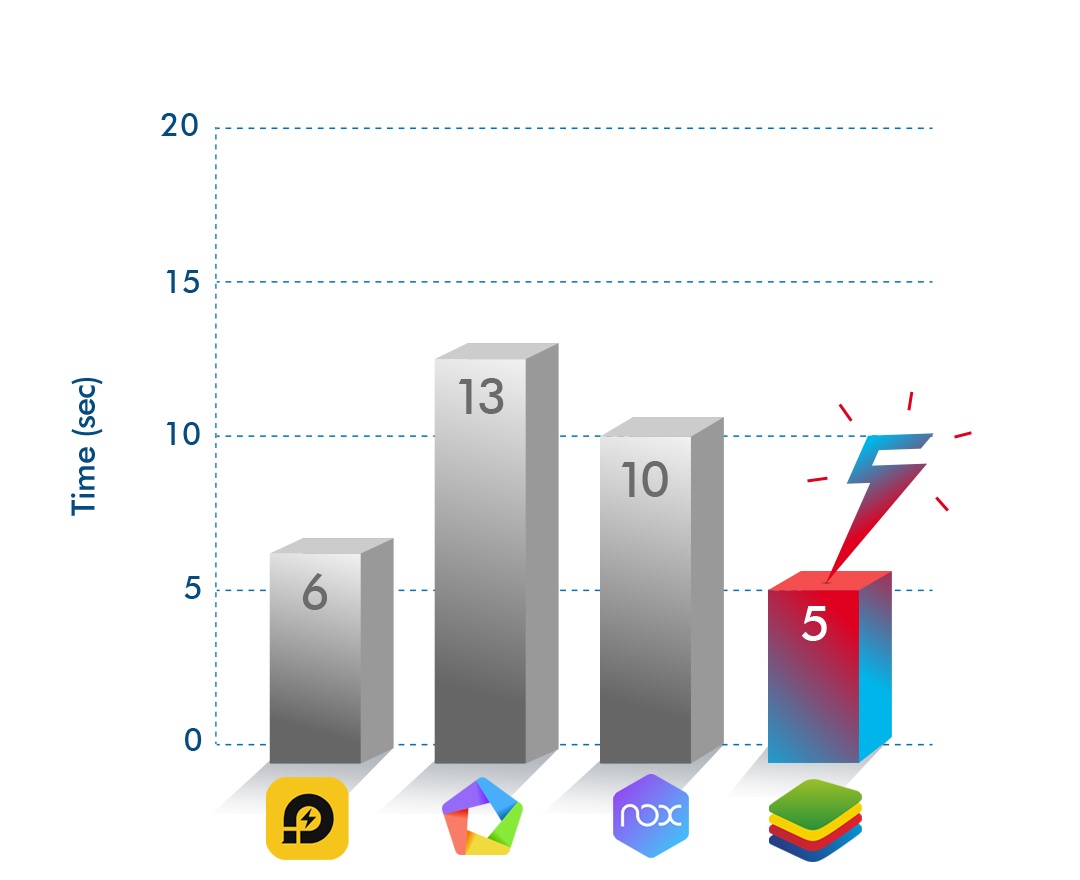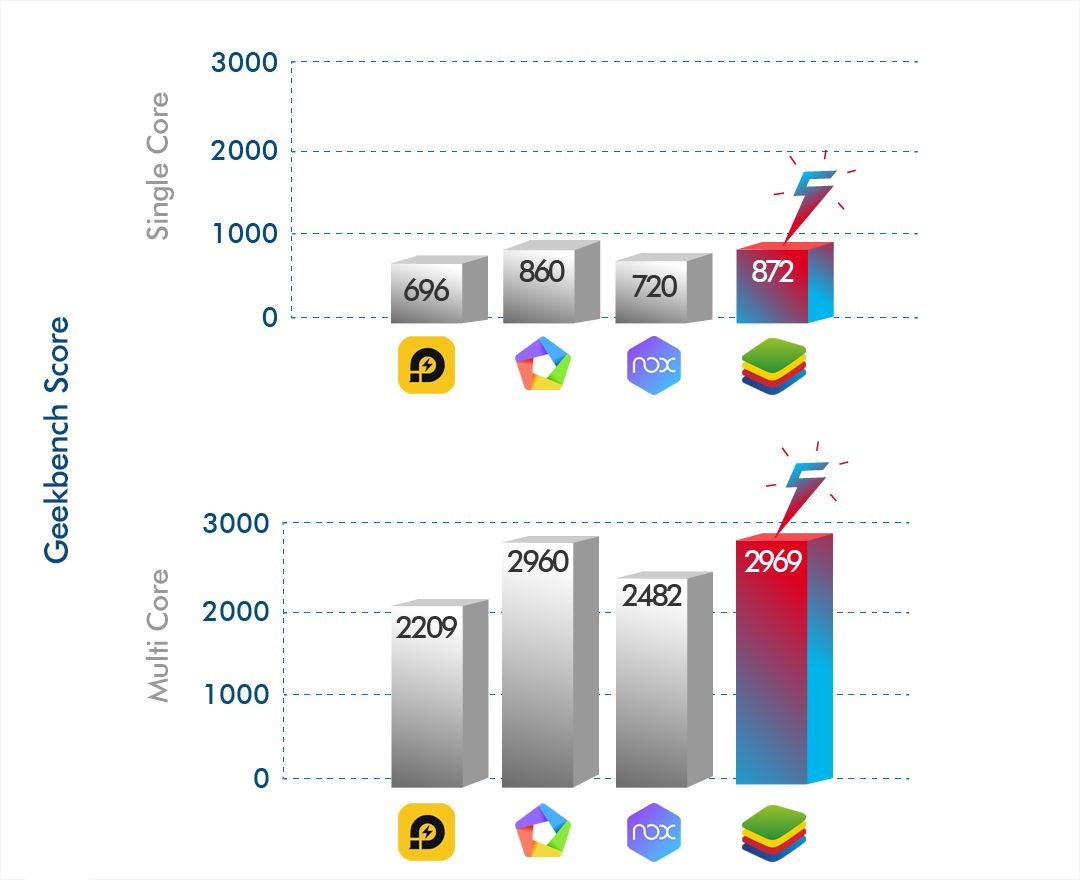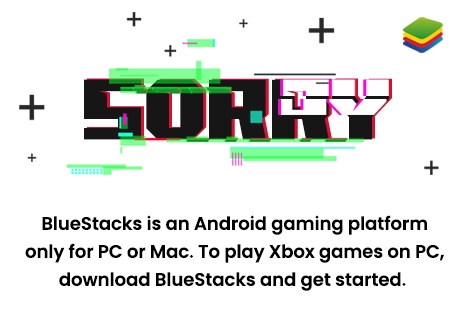
Odtwarzacz aplikacji BlueStacksVersus
LDPlayer , Memu i Nox
BlueStacks 5 przewyższa wszystkie emulatory Androida pod względem każdego parametru. Tutaj pokazujemy, dlaczego jest to najlepsza platforma do gier na Androida na komputery PC.

Wewnętrzny test porównawczy
Porównaliśmy użycie pamięci RAM, wydajność aplikacji i zużycie procesora przez LDPlayer, Memu, Nox i BlueStacks 5.
Wyniki są średnią pomiarów wykonanych na wielu komputerach o różnych specyfikacjach.
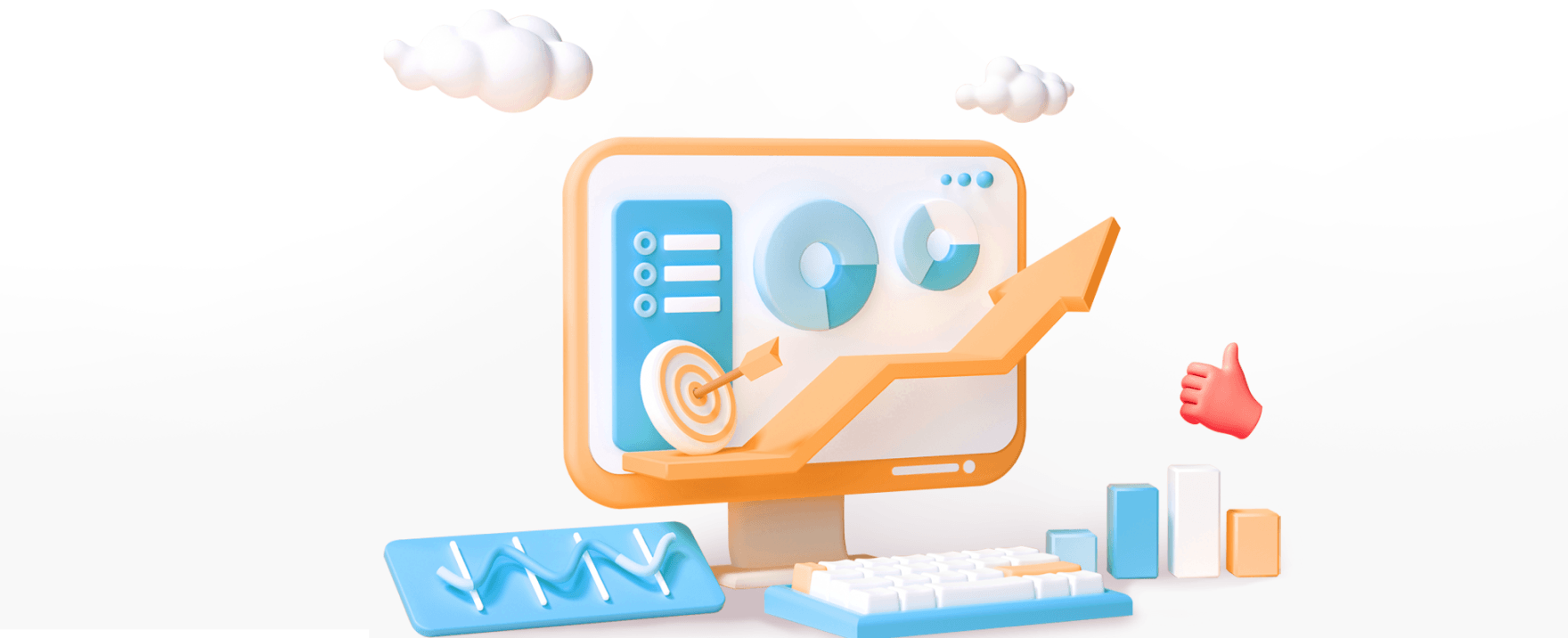
-
System Operacyjny
Microsoft Windows 10
-
Procesor
Procesor wielordzeniowy Intel lub AMD z testem porównawczym pojedynczego wątku
wynik > 1000 -
Grafika
Kontroler Intel/Nvidia/ATI, wbudowany lub dyskretny z testem porównawczym
wynik >= 750 -
RAM
4 GB do 32 GB
-
Wirtualizacja
Włączony
Werdykt
-
Efektywne zużycie CPU
W przeciwieństwie do innych emulatorów, BlueStacks 5 zużywa mniej zasobów i jest prosty na Twoim komputerze.
- BlueStacks 5 przyćmił wszystkie emulatory, zużywając około 10% procesora.
- LDPlayer zarejestrował o 145% wyższe zużycie procesora.
- Nox zużywał o 37% więcej zasobów procesora przy zauważalnym opóźnieniu w działaniu aplikacji.
- Memu wyciągnął całą swoją wagę, ale mimo to zużycie procesora było o 37% wyższe.
![]()
-
Czas uruchamiania odtwarzacza aplikacji
Przeprowadziliśmy kilka testów, aby sprawdzić, jak szybko możemy zacząć grać. Testy przeprowadzono na maszynach o identycznych specyfikacjach.
- BlueStacks 5 był najszybszy z czasem rozruchu wynoszącym 9 sekund
- LDPlayer bardzo się starał, ale wciąż był o 122% wolniejszy.
- Memu był aż 322% wolniejszy, co oznaczało dużo czekania.
- Nox też zajęło trochę czasu. Był o 133% wolniejszy.
![]()
-
Zużycie pamięci RAM - pojedyncza instancja
Przetestowaliśmy BlueStacks w porównaniu z innymi odtwarzaczami aplikacji, aby zobaczyć, jak efektywnie wykorzystują kluczowy zasób, taki jak pamięć RAM.
- BlueStacks 5 zużył najmniej pamięci RAM
- LDPlayer próbował się przełączyć, ale zużył 26% więcej pamięci RAM.
- Nox zajął 53% dodatkowej pamięci RAM, obciążając system.
- Memu też trochę się zmagał i zużywał o 31% więcej pamięci RAM.
![]()
-
Zużycie pamięci RAM - wiele instancji
Uruchomiliśmy wymagające graficznie gry strategiczne i MMORPG w 3 symultanicznych instancjach, każda ze wszystkich App Playerów z identycznymi konfiguracjami testowymi.
- BlueStacks 5 wymagał najmniejszej ilości pamięci RAM.
- LDPlayer potrzebował 22% więcej pamięci RAM.
- Ziewająca luka była widoczna w przypadku Nox , który wykorzystywał o 65% więcej pamięci RAM.
- Memu starał się jak mógł, ale i tak był o 36% wolniejszy.
![]()
-
Czas instalacji APK
Wybraliśmy kilka popularnych tytułów i próbowaliśmy zainstalować ich pliki .apk we wszystkich odtwarzaczach aplikacji.
- BlueStacks 5 miał najszybszy czas instalacji wynoszący 5 sekund.
- LDPlayer znalazł się bardzo blisko z 20% różnicą.
- Nox trwał dwa razy dłużej, dzięki czemu był o 100% wolniejszy.
- Memu nie spieszył się z instalacją APK i był o 160% wolniejszy.
![]()
-
Wynik Geekbench: pojedynczy i wielordzeniowy
Uruchomiliśmy wymagające graficznie gry przy użyciu różnych odtwarzaczy aplikacji na identycznych komputerach i porównaliśmy wyniki z wynikami testów porównawczych w Geekbench.
(Geekbench to wieloplatformowe narzędzie do testowania urządzeń z systemem Android i analizy wydajności komputera)- BlueStacks 5 był na równi z MEmu z nieznaczną różnicą.
- Memu podążał tuż za nim z różnicą 1,3% i 0,3%.
- LDPlayer pozostał w tyle z ogromną różnicą 21% i 26%.
- Nox wypadł zbyt słabiej w porównaniu. Zdobył 17% mniej dla obu.
![]()
FAQ’S
-
BlueStacks vs Nox vs LD Player vs Memu - Jaki jest najlepszy emulator?
Wewnętrzne testy porównawcze jednoznacznie dowodzą, że BlueStacks jest najlepszym emulatorem Androida na rynku. Jest to dodatkowo wzmocnione faktem, że ponad 500 milionów graczy korzysta z BlueStacks do grania w swoje ulubione gry na Androida na PC na całym świecie. -
Jakie są kluczowe cechy BlueStacks 5?
Jest wiele. Oto pełna lista tego, co sprawia, że BlueStacks 5 jest tak wyjątkowy dla wszystkich fanów gier na Androida. -
W jaki sposób BlueStacks 5 jest lepszy od BlueStacks 4?
Udoskonaliliśmy BlueStacks 4, aby BlueStacks 5 było naszą najszybszą i najlżejszą wersją w historii. Sprawdź porównanie wydajności między nimi w Rise of Kingdoms. -
Gdzie mogę pobrać BlueStacks 5?
Wejdź na naszą stronę i pobierz ją stamtąd. Ze względów bezpieczeństwa zalecamy, aby zawsze pobierać BlueStacks z zaufanych witryn. -
Jak być na bieżąco z BlueStacks 5?
